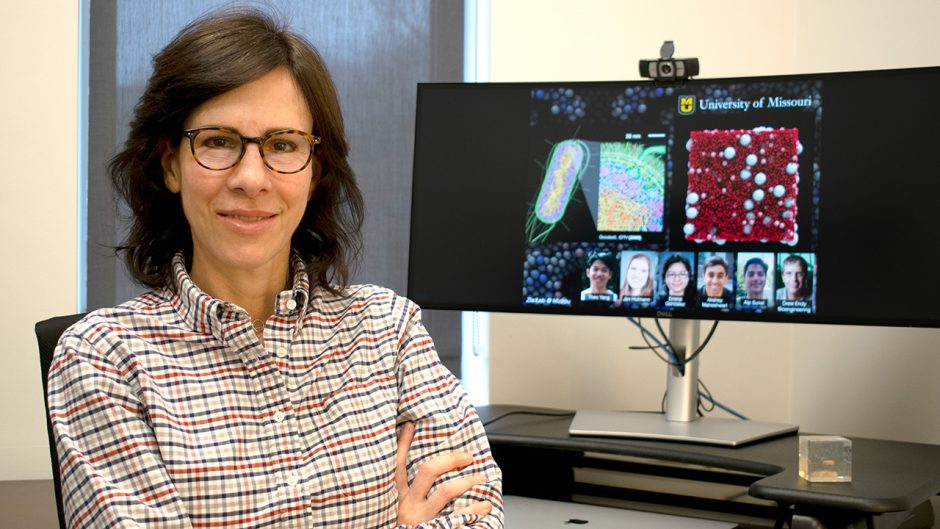
April 4, 2023
Equipped with funding from the Alfred P. Sloan Foundation’s Matter-to-Life Program, Roseanna N. Zia is using a special class of physics to explore what it means to be alive.
Zia is the University of Missouri College of Engineering’s new associate dean for research and the inaugural Dave Wollersheim Professor of Mechanical and Aerospace Engineering. She’s also a chemical engineer and physicist who studies colloidal gels, glasses and suspensions.
Colloids are fluid-suspended, microscopically small particles found in gels, glasses and suspensions that form more than 95% of biological fluids, as well as everyday substances between liquid and solid state — think paint, shampoo, and yogurt.
“The Sloan Foundation project represents the most emergent thinking about physics and matter as they relate to life,” Zia said. “My group has shown that colloid physics regulate life-essential processes in biological cells. This funding allows us to further explore and explain properties and behavior of biological systems using principles of colloidal physics.”
Now, her computational lab searches for how physical principles produce the basic elements of life in biological cells: growth, replication and heredity. With the Sloan grant, Zia will build the first physics-based model of the JCVI-Syn3A minimal cell containing the minimal set of genes essential to life — an ideal proving ground for probing this matter/life nexus.
“We believe there are life-essential physics that cooperate with minimal genetics — and some that bypass genetics — to lead matter to life,” she said. “Discovery and identification of the fundamental physics required to instantiate life in the simplest living cell would enlarge the picture of life currently framed by biochemistry and the Central Dogma.”
With that knowledge, scientists could answer key questions such as how life emerges from information-processing matter systems or how key functions that distinguish living things can be realized using synthetic matter. And that could lead to new technologies, improved therapeutic drug treatments, energy production and environmental management.
“At this point, we’re seeking fundamental knowledge,” Zia said. “We’re looking to understand both the physical distinctiveness of life and the processes that guide its emergence from matter. That would give us a more informed explanation of how life arises and evolves over time, as well as a physics-based platform for drug therapies. Because physics are the same in every person, the hope is that an effective physics-based therapeutic will work in everyone.”
Read more from the College of Engineering


